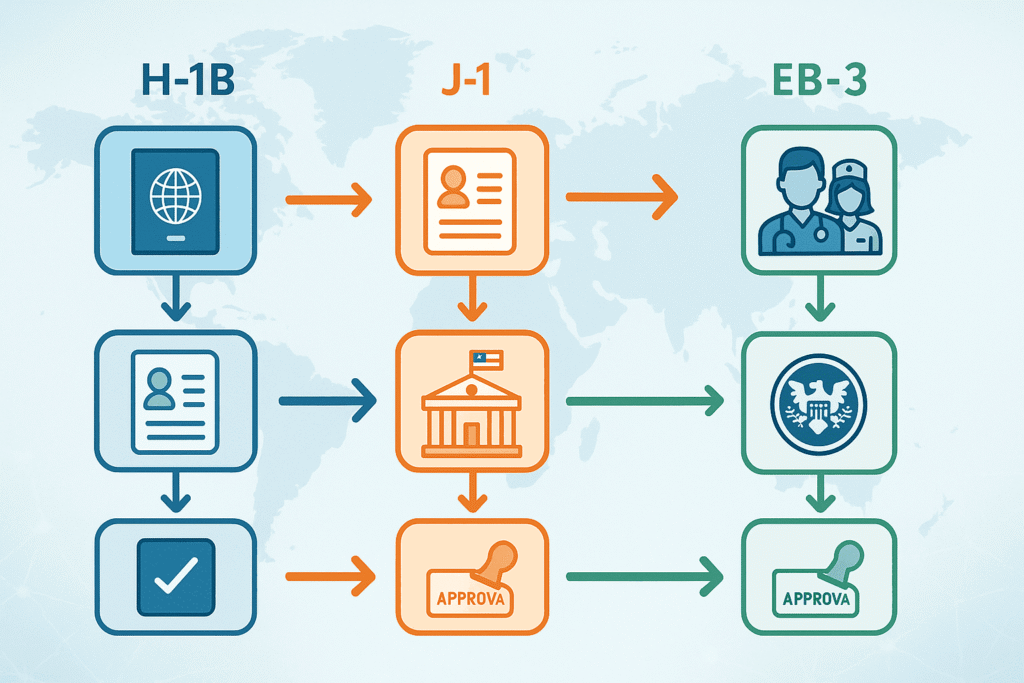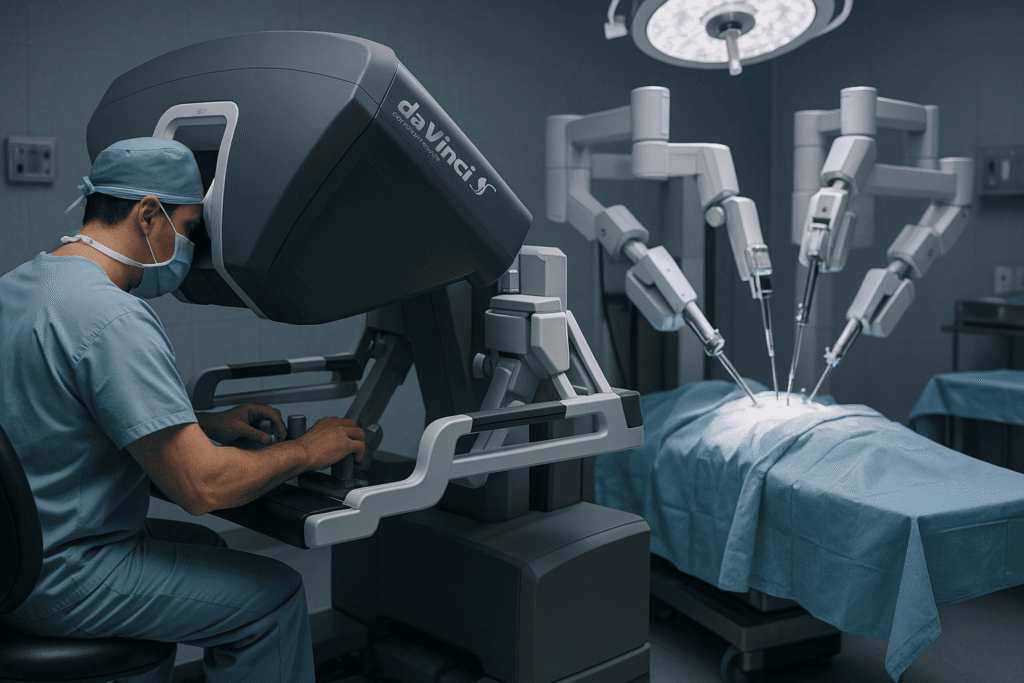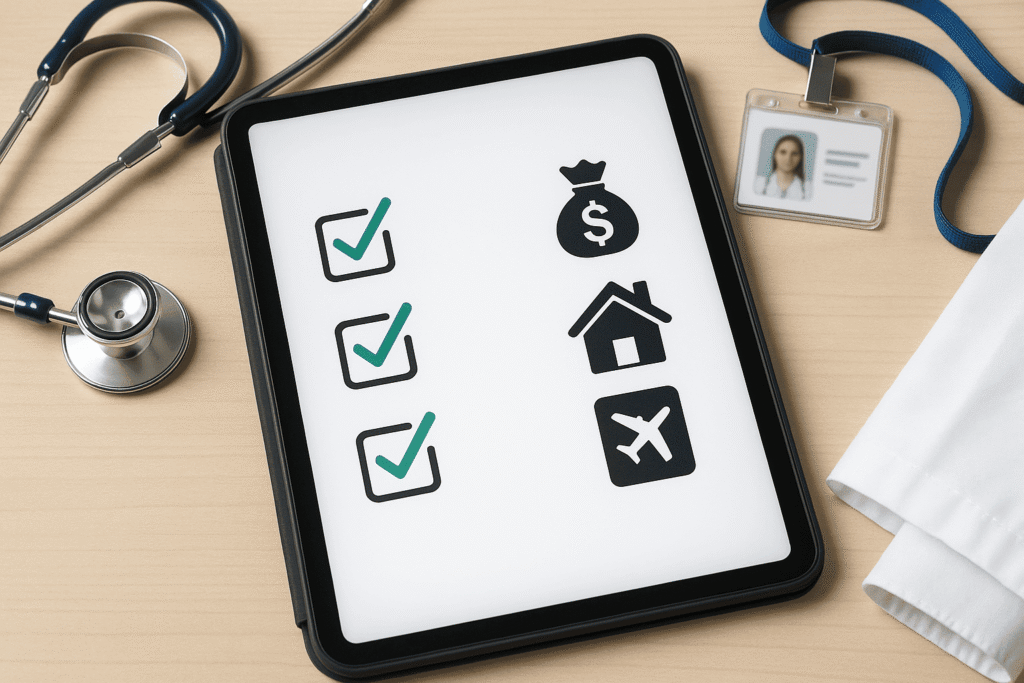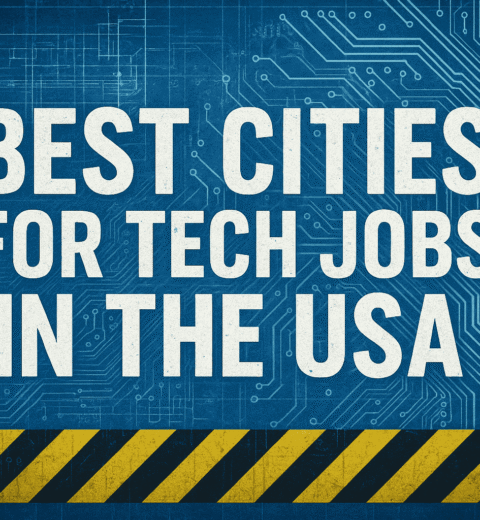Healthcare Jobs in the USA: The Ultimate Guide to Visa Sponsorship & Career Success
Table of Contents
- Introduction to Healthcare Jobs in the USA
- Why Pursue Healthcare Jobs in the USA?
- Top Healthcare Jobs in the USA with Visa Sponsorship
- Requirements for Healthcare Jobs in the USA
- How to Get Visa Sponsorship for Healthcare Jobs
- Best Websites to Find Healthcare Jobs in the USA
- Tips to Secure a Healthcare Job in the USA
- Conclusion
Introduction: Why the U.S. is the Ultimate Destination for Healthcare Professionals
If you’re a healthcare worker dreaming of advancing your career in a country that offers top-tier salaries, cutting-edge medical technology, and unmatched professional growth, then the United States is an option to consider.
The U.S. healthcare system is one of the most advanced in the world, but it’s also facing a critical shortage of skilled professionals. An aging population, increasing chronic diseases, and a growing need for specialized care have created thousands of job openings—many of which come with visa sponsorship for qualified international candidates.
Why This Is Your Golden Opportunity
Whether you’re a nurse, doctor, surgeon, lab technician, or physical therapist, U.S. hospitals, clinics, and research facilities are actively looking for professionals like you. Unlike many other industries, healthcare jobs in America are recession-proof, meaning your skills will always be in demand.
However, the following adds even more excitement to this opportunity:
- ✅ Higher Salaries—U.S. healthcare workers earn 2-3x more than in many other countries.
- ✅ Career Advancement—Specialization opportunities, leadership roles, and research positions are widely available.
- ✅ Visa Sponsorship – Many employers are willing to sponsor H-1B, J-1, or TN visas for the right candidates.
- ✅ World-Class Facilities—Work with the latest medical technology and groundbreaking treatments.
Who Can Benefit from This Guide?
This guide is designed for:
- Top U.S. hospitals are seeking to hire international nurses.
- Doctors and surgeons seeking better pay and career growth.
- Medical technologists, pharmacists, and therapists wanting to move to the U.S.
- Recent healthcare graduates exploring overseas opportunities.
What You’ll Learn in This Guide
By the end of this article, you’ll know:
- ✔ The highest-paying healthcare jobs in the U.S. with visa sponsorship
- ✔ Step-by-step visa requirements (H-1B, J-1, TN, and more)
- ✔ Where to find legitimate job openings (avoiding scams!)
- ✔ How to stand out in applications and interviews
If you’re ready to take the next step toward a lucrative and fulfilling healthcare career in America, keep reading—this is an opportunity to consider.
Why This Matters Now More Than Ever
The U.S. Bureau of Labor Statistics predicts that healthcare occupations will grow by 13% from 2021 to 2031, much faster than the average for all occupations. That means over 2 million new jobs will open up—and many will go to foreign-trained professionals who meet the requirements.
But competition is fierce. Hospitals receive hundreds of applications for a single position, so knowing how to navigate the job search, visa process, and licensing requirements is crucial.
This guide provides information about healthcare jobs in the U.S. with visa sponsorship—without wasting time on dead-end leads.
🚀 Let’s get started!
Why Pursue Healthcare Jobs in the USA? 5 Life-Changing Benefits You Can’t Ignore
If you’re a healthcare professional considering an international career move, the United States isn’t just an option—it is an option. Here’s why thousands of medical professionals from around the world are considering this decision every year:
1. Salary Considerations
Salary Information: U.S. Healthcare Pay
Let’s talk about the elephant in the room—the paycheck. Because while passion for patient care matters, the financial reality of working in American healthcare is too transformative to ignore.

By the Numbers: U.S. vs. Global Salaries
| Country | RN Salary | Physician Salary |
|---|---|---|
| United States | $75,000-$110,000+ | $200,000-$700,000+ |
| Philippines | $5,000 | $20,000 |
| India | $4,200 | $15,000 |
| Nigeria | $3,800 | $12,000 |
These numbers represent:
- ✅ Debt freedom from student loans in years vs. decades
- ✅ College funds for your children that were previously unimaginable
- ✅ Retirement savings that actually grow
Real Stories: How Salaries Change Lives
“I made more money in my first year in Houston than my father did in his whole career. I paid off my family’s debts and bought my parents their first home.”
Mumbai Salary: $18,000/year (after 10 years of experience)
Texas Salary: $420,000/year (with performance bonuses)
Additional Earnings
Many professionals don’t realize U.S. healthcare offers:
- Overtime pay (1.5x hourly rate after 40 hours)
- Shift differentials (+$5-$15/hour for nights/weekends)
- Signing bonuses (up to $25,000 for RNs in high-demand states)
- Student loan repayment (Many hospitals offer $50,000+ assistance)
Beyond the Paycheck: Benefits That Multiply Your Income
American healthcare jobs come with:
- 401(k) matching (free money for retirement—typically 3-6% of salary)
- Health insurance (covering 70-100% of medical costs)
- Tuition reimbursement (For advanced degrees you can earn while working)
The Bottom Line
While no one enters healthcare just for the money, U.S. salaries enable something profound:
- Nurses can work one shift to earn what took a month back home.
- Doctors gain financial security unheard of in most countries.
- Entire family trajectories change in a single generation.
2. Career Growth
The American healthcare system offers career paths. Unlike rigid systems elsewhere, the U.S. rewards initiative with tangible advancement opportunities that transform both your professional standing and earning potential.
Your Growth Pathways in American Healthcare
1. Specialization: Become the Expert Everyone Needs
While many countries lock professionals into general roles, U.S. healthcare actively encourages specialization through:
- Certification Programs (Often employer-funded)
- Critical Care (CCRN)
- Oncology (OCN)
- Neonatal (RNC-NIC)
- Clinical Ladder Programs
- Staff Nurse → Clinical Nurse Specialist
- Resident → Attending Physician
- General PT → Orthopedic Specialist
Real Impact: A Nigerian nurse we interviewed tripled her salary by adding Wound Care Certification—a 6-month program her Chicago hospital paid for.
2. Leadership: From Bedside to Boardroom
The U.S. system identifies and promotes talent aggressively. Common progression tracks include:
| Role | Timeframe | Salary Bump |
|---|---|---|
| Staff RN | 0-2 years | $75,000 |
| Charge Nurse | 2-3 years | +$10,000 |
| Nurse Manager | 4-5 years | +$25,000 |
| Director of Nursing | 6-8 years | +$50,000 |
Key Difference: Many hospitals have formal leadership development programs for high-potential staff—something rare in other countries.
3. Research & Innovation: Work Where Medical History is Made
Institutions like Mayo Clinic, Cleveland Clinic, and Johns Hopkins actively recruit international professionals for:
- Clinical trials with global impact
- Medical device development teams
- NIH-funded research projects
Recent Example: A Vietnamese medical researcher secured an O-1 visa (for extraordinary ability) after contributing to groundbreaking Alzheimer’s research at Massachusetts General Hospital.
The American Advantage: Merit Over Seniority
What makes U.S. career growth unique:
- ✅ Performance-based promotions (not just years served)
- ✅ Employer-funded education (many hospitals pay for advanced degrees)
- ✅ Clear public salary data (no guessing about next-step earnings)
Pro Tip: Document every achievement—U.S. employers value quantifiable results like:
- “Reduced patient falls by 30%”
- “Implemented new protocol saving $200,000 annually.”
From Manila to Management: A 4-Year Success Story
When Nurse Rivera arrived in Texas:
- 2019: Staff RN ($68,000)
- 2021: Charge Nurse (+$9,000)
- 2023: Nurse Manager ($112,000)
Her secret? She:
- Asked for quarterly development feedback
- Took free hospital leadership courses
- Volunteered for quality improvement projects
“In the Philippines, I’d still be waiting for someone to retire. Here, they created a new position when they saw what I could do.”
3. Technology in Healthcare
For healthcare professionals and analog systems, American hospitals offer something extraordinary: technology that doesn’t just assist your work—it transforms what’s medically possible. This isn’t the future of medicine—it’s what you’ll use on your next shift.
Game-Changing Technologies You’ll Master
1. Robotic Surgery: Precision Beyond Human Hands
The da Vinci Surgical System (found in 67% of U.S. hospitals) allows:
- Sub-millimeter precision in complex procedures
- 3D visualization with 10x magnification
- Tremor filtration for flawless suturing
Real Impact: A Colombian surgeon reduced his prostatectomy complication rate by 40% after training on the system at Johns Hopkins.
2. AI Diagnostics: Your Always-Learning Assistant
U.S. hospitals now deploy AI that:
- 🔍 Detects early-stage tumors in radiology (5% more accurately than humans)
- 💓 Predicts cardiac arrests 6 hours before symptoms (Epic’s AI model)
- 📊 Optimizes staffing using predictive patient flow algorithms
Surprising Fact: The FDA has cleared 523 AI-powered medical tools—and U.S. providers get first access.
3. Genomic Medicine: Personalized Care at Scale
Where most countries still treat diseases generically, U.S. systems like:
- Mayo Clinic’s Center for Individualized Medicine
- 23andMe Health + Ancestry Service partnerships
- CRISPR trial programs
…are making DNA-guided treatment standard practice.
Why This Matters for Your Career
- Skill Premium
- Robotic surgery certification adds $25,000+ to surgeon salaries.
- AI-literate nurses command 15% higher pay.
- Research OpportunitiesHelp develop tomorrow’s tech through:
- Medical device clinical trials
- NIH-funded innovation projects
- Global PortabilityU.S. tech experience makes you:
- Highly recruited by top hospitals worldwide
- Eligible for consulting roles with health tech firms
From Frustration to Breakthrough: Dr. Chen’s Story
“I finally feel like I’m practicing 21st-century medicine—not fighting outdated tools.”
After years of struggling with:
- ❌ Film X-rays (China)
- ❌ Manual charting
Her move introduced:
- ✅ AI-powered imaging analysis
- ✅ Voice-to-text EMR documentation
- ✅ Remote patient monitoring systems
Tech Adoption in U.S. Hospitals
| Technology | % of Hospitals Using | Salary Impact |
|---|---|---|
| Robotic Surgery | 68% | +18-25% |
| AI Diagnostics | 82% | +12-15% |
| Genomic Testing | 57% | +10-20% |
For Tech-Focused Professionals:
- Target “Most Wired Hospitals” (annual HIMSS list)
- Highlight tech competencies in applications.
- Ask about training programs during interviews.
4. Job Security
Healthcare is a field with job opportunities. While tech giants conduct mass layoffs and corporate jobs vanish overnight, your medical skills remain recession-proof, pandemic-resistant, and always in demand.
By the Numbers: Healthcare’s Unstoppable Growth
- 📈 By 2032, there will be 1.8 million new healthcare jobs (BLS).
- 💼 45,000+ physician openings annually through 2032
- 🏥 139,600 nursing jobs added just in 2023 alone
These aren’t just statistics—they represent:
- ✅ Lasting career stability in uncertain times
- ✅ Multiple job offers for qualified professionals
- ✅ Geographic flexibility (every state needs healthcare workers)
Why Healthcare Never Slows Down
- Demographic Imperatives
- 10,000 Americans turn 65 every day (requiring more care).
- Chronic disease rates are up 42% since 2000.
- Systemic Shortages
- 78% of U.S. hospitals report critical staffing gaps.
- 89% of rural areas lack sufficient providers.
- Universal NeedUnlike discretionary industries:
- People always need medical care.
- Babies keep being born.
- Emergencies never stop happening.
Real-World Job Security in Action
“When my tech-engineer husband got laid off, my nursing salary kept our family afloat. Healthcare doesn’t just employ—it sustains.”
During the 2020 pandemic:
- 📉 Tech layoffs: 240,000 jobs lost
- 📉 Retail collapses: 100,000+ stores closed
- 📈 Healthcare hiring: 350,000+ new positions added
Your Skills = Lifetime Employability
The most crisis-proof specialties right now:
- Travel Nursing (Always the first to get hired)
- Geriatric Care (Aging population = permanent demand)
- Emergency Medicine (24/7/365 necessity)
- Mental Health (Therapy needs are up 300% since 2019)
Beyond Employment: The Power of Choice
With U.S. healthcare shortages, you gain:
- ✔ Location leverage (urban vs. rural salary differences up to $40,000)
- ✔ Schedule control (3x12s vs. 5x8s, weekend premiums)
- ✔ Specialty mobility (easier to switch fields than in other countries)
Job Security Comparison Chart
| Industry | Recession Impact | Pandemic Performance | Future Growth |
|---|---|---|---|
| Healthcare | ⭐⭐⭐⭐⭐ (Thrives) | ⭐⭐⭐⭐⭐ (Expanded) | ⭐⭐⭐⭐⭐ (1.8M new jobs) |
| Technology | ⭐⭐ (Mass layoffs) | ⭐⭐⭐ (Mixed) | ⭐⭐⭐ (AI disruption) |
| Finance | ⭐⭐⭐ (Volatile) | ⭐⭐ (Struggled) | ⭐⭐ (Automating) |
Action Steps to Lock In Your Future
- Get U.S. licensed (the golden ticket to stability).
- Specialize strategically (geriatrics, critical care, psych).
- Build emergency savings (3-6 months’ living expenses).
5. Visa Sponsorship
Let’s shatter the biggest myth right now: Getting a U.S. work visa in healthcare is a process that happens for thousands of international professionals. While other industries tighten immigration policies, American hospitals are actively solving their staffing crises by recruiting globally.
The Visa Sponsorship Landscape in 2024

1. H-1B Visas: The Golden Ticket for Skilled Healthcare Workers
- Who’s Getting Them:
- Registered Nurses with BSN degrees
- Physical Therapists
- Medical Technologists (especially in high-demand specialties)
- Game-Changing Development:Nonprofit hospitals (about 60% of U.S. healthcare facilities) are exempt from the H-1B cap, meaning they can sponsor year-round without anxiety.
Real Example: Cleveland Clinic sponsored 143 H-1B nurses last fiscal year—with an approval rate of 98%.
2. J-1 Exchange Programs: The Physician Pipeline
- Two Pathways:
- Clinical Training: For medical residents and fellows
- Research Scholars: For those contributing to medical advancements
- The Waiver Advantage:Through programs like Conrad 30, J-1 doctors can transition to green cards by working in underserved areas for 3 years.
Surprising Fact: Over 7,000 physicians annually enter the U.S. through J-1 visas.
3. Direct Green Card Sponsorship: The Fast Track to Permanent Residency
Forward-thinking hospital systems are now bypassing temporary visas entirely for:
- For RNs with two or more years of experience, EB-3 visas
- EB-2 Visas: For physicians with advanced qualifications
Current Processing Times:
- EB-3: 8-14 months (most countries)
- EB-2: Varies by nationality
The Texas Model: How One Hospital System Hired 87 International Nurses
Baylor Scott & White Health’s 2023 international recruitment program included:
- ✔ Full visa fee coverage ($5,000+ value)
- ✔ NCLEX prep courses
- ✔ Relocation bonuses (up to $10,000)
- ✔ Cultural assimilation training
Their secret? Partnering with approved staffing agencies that handle the entire immigration process.
Who Qualifies Right Now?
The most sought-after profiles:
- Nurses with ICU/ER/OR experience
- Physicians in family medicine, psychiatry, and general surgery
- Allied health professionals in lab tech, radiology, and PT
Shocking Gap:
The U.S. currently has:
- 200,000+ unfilled nursing positions
- 15,000+ primary care physician shortages
Your 3-Step Visa Action Plan
- Target Cap-Exempt Employers
- University hospitals
- Nonprofit health systems
- Government facilities (VA hospitals)
- Prepare Your “Sponsorship Pitch”Highlight:
- Specialty skills they can’t find locally
- Willingness to work in high-need areas
- Long-term commitment to the organization
- Time Your Application
- H-1B filings: April 1 annually
- J-1 programs: Rolling admissions
- Direct green card: Anytime
The Life-Changing Math
| 🇵🇭 Manila Nurse | 🇺🇸 U.S.-Sponsored Nurse | |
|---|---|---|
| Salary | $5,000/year | $85,000/year |
| Visa path | Uncertain | H-1B → Green Card in 3-5 years |
| Family benefits | Limited | Spouse can work (H-4 EAD) |
Next Steps Preview:
In our upcoming section, we’ll reveal:
- Exact salary negotiation tactics for sponsored positions
- Red flags in visa sponsorship offers
- State-by-state sponsorship hotspots
The USA’s Top 5 Highest-Paying Healthcare Jobs with Sponsored Visas (2025 Guide)

If you’re an international healthcare professional dreaming of working in America, these in-demand roles offer the best combination of high salaries and visa sponsorship opportunities. Let’s explore each career path in detail:
1. Registered Nurses (RNs): Medical Professionals
Registered Nurses in the USA: Your Complete Guide to High-Demand Opportunities
The United States isn’t just experiencing a nursing shortage—it’s facing a full-blown nursing crisis, creating opportunities for international RNs. With hospitals so desperate for qualified nurses that they’re offering six-figure salaries, visa sponsorships, and massive sign-on bonuses, there’s never been a better time to bring your skills to America.
Why U.S. Hospitals Are Begging for International Nurses
By the Numbers:
- 200,000+ nursing vacancies right now
- 1 million RNs expected to retire by 2030
- 40% of rural hospitals report critical staffing shortages.
| Facility Type | Hiring Urgency | Typical Benefits |
|---|---|---|
| Major Urban Hospitals | ⭐⭐⭐⭐ | $10k-$25k sign-on bonuses |
| Rural Critical Access | ⭐⭐⭐⭐⭐ | Housing stipends + loan repayment |
| Travel Nursing Agencies | ⭐⭐⭐⭐ | $5k+/week crisis contracts |
Salary Information
Base Salaries:
- Texas: $78,000 (new grads) → $95,000 (3 years)
- California: $110,000 (starting) → $150,000 (ICU specialists)
- Florida: $72,000→$88,000 with shift differentials
Additional Earnings:
- Overtime: Time-and-a-half after 40 hours (adds $15k-$30k)
- Weekend/Night Shifts: +$5-$15/hour extra
- Certification Bonuses: Up to $10k for CCRN, CRNA, etc.
A Philippine nurse in Ohio cleared $142,000 last year with overtime and incentive pay.
Considerations for U.S. Nursing
1. Education Requirements
- Option A: 4-year BSN (best for visa sponsorship)
- Option B: 2-year ADN + bridge program
- International Nurses: Must complete CGFNS evaluation
Smart Move: Many community colleges offer fast-track ADN programs that cost 1/3 of university prices.
2. Licensing Process

- Pass NCLEX-RN (Now offered in select international locations)
- Apply for a state license (40 states are covered by compact licenses).
- Complete fingerprinting/background check
Pro Tip: Florida and Texas process licenses fastest for international applicants (often <3 months).
3. Visa Pathways
- H-1B: For BSN-prepared nurses (cap-exempt at nonprofits)
- EB-3 Green Card: Direct permanent residency option
- TN Visa: Instant approval for Canadian/Mexican nurses
Breaking News: The Biden administration just expanded Nursing Visa Fast Track programs—cutting processing times by 40%.
Hospital Perks You Won’t Believe
Modern nurse recruitment packages now include:
- Full NCLEX prep reimbursement ($2,000+ value)
- Free temporary housing (1-3 months)
- Immigration attorney fees covered ($5,000+)
- Family relocation assistance
“My Dallas hospital paid for my husband’s flight, our apartment deposit, and even our dog’s quarantine fees.”
Specializations That Triple Your Value
These in-demand specialties command premium pay:
- ICU/Critical Care (+$15k-$25k)
- Operating Room (+$12k-$20k)
- Labor & Delivery (+$10k-$18k)
- Psychiatric (critical shortages nationwide)
Action Plan: Start Your Journey Today
- Get Credentialed: Begin CGFNS evaluation (6-9 month process).
- Choose Your State: Research licensing requirements.
- Connect With Recruiters: Specialized agencies like Avant Healthcare or PassportUSA
2. Doctors and Surgeons: Career Information

Physicians in America: Career and Visa Information
For international doctors, the United States represents the ultimate proving ground—a place where medical expertise meets unmatched earning potential, cutting-edge practice environments, and clear pathways to permanent residency. While the journey requires dedication, the rewards transform not just careers, but entire family legacies.
Specialties That Open Doors (and Checkbooks)
The American healthcare system is extending a warm welcome to:
1. Primary Care Physicians
- The Reasons for Their Need: 83 million Americans reside in places with a shortage of primary care.
- Salary Range: $220,000-$280,000
- Perks:
- $100k+ student loan repayment (NHSC programs)
- Fast-track green cards (EB-2 visa)
- 4-day workweeks becoming standard
2. Psychiatrists
- Crisis-Level Demand: 60% of counties lack a single psychiatrist.
- Earning Power: $280,000-$350,000
- Practice Innovations:
- Telepsychiatry options (work from home 2-3 days/week)
- $50k signing bonuses in Midwest states
3. General Surgeons
- Rural America’s Lifeline: 30% of counties have zero surgeons.
- Compensation Package: $350,000-$450,000
- Game-Changing Benefit: Many hospitals are now covering 100% of malpractice insurance.
4. Neurologists
- Aging Population Driver: Stroke/Alzheimer’s cases up 40% since 2010
- Elite Compensation: $450,000-$700,000
- Research Opportunities: NIH grants for clinical trials frequently available
Salary Information
| Specialty | Starting Salary | 5-Year Earnings | Bonus Potential |
|---|---|---|---|
| Family Medicine | $220k | $280k | $30k-$50k |
| Psychiatry | $280k | $350k | $40k-$60k |
| General Surgery | $350k | $450k | $50k-$80k |
| Neurosurgery | $450k | $700k+ | $100k+ |
A Nigerian neurosurgeon at Mayo Clinic cleared $812,000 last year with call coverage and research stipends.
Your 3-Step Licensing Journey
1. USMLE Conquest
- Step 1: Now pass/fail (reduces stress)
- Step 2 CK: Average score for IMGs: 235
- Step 3: Can be taken during residency
Pro Tip: Caribbean medical grads have a 58% match rate when targeting less competitive specialties.
2. Residency Reality
- Duration: 3 years (family medicine) to 7 years (neurosurgery)
- Stipends: $65,000-$80,000 annually
- Key Insight: J-1 visas are standard, but some programs now offer H-1B.
3. State Licensing
- Fast-Track States: Texas and Florida process in <60 days.
- Cost: $1,500-$3,000 (varies by state)
- Hidden Requirement: Some states mandate US clinical experience.
Visa Pathways: From Training to Permanent Residence
- J-1 → Conrad 30 Waiver
- Work 3 years in an underserved area.
- 94% approval rate
- Leads to EB-2 green card
- Direct H-1B Sponsorship
- Increasingly common for specialty physicians
- Cap-exempt at university hospitals
- EB-1/EB-2 Green Cards
- For researchers and exceptional physicians
- No labor certification required
An Indian psychiatrist secured EB-1 status by publishing 12 papers during residency—now earning $340k in Pennsylvania.
The Recruitment Revolution
Forward-thinking hospital systems now offer:
- $50k relocation packages
- Spousal work authorization assistance
- Private school tuition for children
- 2-week “look-see” visits before committing
Specialization Secret: Dual Certification Advantage
Physicians adding:
- Addiction Medicine (+$75k)
- Sleep Medicine (+$60k)
- Pain Management (+$90k)
…are seeing 20-30% salary bumps and faster visa approvals.
Action Plan:
- Take USMLE Step 1 (6-12 month prep)
- Secure US Clinical Experience (3-6 months)
- Apply Through ERAS (Match rates are up 7% for IMGs in 2024).
3. Medical Technologists: Healthcare Careers
Medical Technologists: Healthcare Roles
While doctors and nurses dominate healthcare headlines, a critical behind-the-scenes profession is experiencing explosive demand, generous visa sponsorship, and salaries that outpace many white-collar jobs—all without the grueling overnight shifts of clinical roles.
Why U.S. Labs Are Fighting Over Qualified Techs
The pandemic exposed a terrifying reality: America’s lab system was dangerously understaffed. Now, hospitals and diagnostic centers are:
- Offering 20% higher salaries than pre-COVID levels
- Sponsoring H-1B visas for qualified candidates
- Paying relocation bonuses up to $15,000
By the Numbers:
- 43% increase in job postings since 2020
- 15,000+ unfilled positions in hospital labs alone
- Due to a lack of employees, 72% of labs say they have turned away work.
Who’s Getting Hired Right Now?
| Specialty | Starting Salary | Visa Sponsorship Rate |
|---|---|---|
| Clinical Chemistry | $65,000 | 38% |
| Hematology | $68,000 | 42% |
| Microbiology | $72,000 | 51% |
| Molecular Biology | $85,000 | 63% |
A Filipino med tech with ASCP certification landed three job offers in California before even finishing her visa paperwork.
The Compensation Breakdown
Base Pay That Surprises Most Candidates:
- Entry-level: $60,000 (rural areas)
- Experienced: $85,000 (coastal cities)
- Lead Techs: $95,000-$110,000
Hidden Income Boosters:
- Night shift differentials: +$5-$10/hour
- Weekend premiums: Time-and-a-half
- Certification bonuses: $3,000-$5,000 for:
- ASCP
- AMT
- Specialty credentials
“I earn more as a night shift micro tech in Chicago than my brother does as an accountant back home in Nigeria.”
Your Path to U.S. Certification
1. Education Requirements
- Non-U.S. Graduates:
- 4-year science degree (biology, chemistry, etc.)
- Coursework equivalency evaluation (through NACES)
- 1 year of clinical training (can be home country experience)
- U.S. Graduates:
- NAACLS-accredited program
2. The ASCP Exam
- Pass Rates: 72% for first-time international test-takers
- Prep Options:
- LabCE ($299 online course)
- ASCP Board of Certification Study Guide
- 6-12 month bridge programs
Smart Move: Some employers, like Quest Diagnostics, offer paid training programs that include exam prep.
3. State Licensing
Only 12 states require separate licensure (including CA, FL, and NY). The process typically involves:
- Transcript review
- Background check
- $200-$400 fee
Visa Pathways You Didn’t Know Existed
- H-1B Visa
- For bachelor’s degree holders
- Cap-exempt at nonprofit hospitals
- EB-3 Green Card
- Permanent residency option
- Current wait time: 12-18 months
- TN Visa (Canadians/Mexicans)
- Instant approval
- Renewable indefinitely
Breaking News: The CDC just launched a Fast Track for Public Health Lab Techs with 90-day processing.
Where the Jobs Are Hottest
- Reference Labs (Quest, LabCorp)
- Highest volume → Most openings
- Best for gaining diverse experience
- Hospital Systems
- Better benefits
- More advancement opportunities
- Research Institutions
- NIH-funded positions
- Cutting-edge technology exposure
Specializations That Command Premium Pay
- Molecular Diagnostics (+$15k)
- Blood Bank Specialists (+$12k)
- Histotechnology (+$10k)
- Toxicology (+$18k)
Action Plan: Start Your U.S. Lab Career
- Get Your Credentials Evaluated (6-8 weeks)
- Schedule ASCP Exam (Offered globally)
- Connect With Specialty Recruiters Like:
- Club Staffing
- Aureus Medical
- Fusion Healthcare
Why This Career Rocks:
- ✔ Regular hours (Most labs operate 7am-5pm)
- ✔ Low stress compared to patient-facing roles
- ✔ Constant innovation with new diagnostic tech
4. Physical Therapists: Career Information

Physical Therapists in the USA: Demand and Salary Information
America is facing a mobility crisis—and physical therapists are stepping into the spotlight as one of the most sought-after healthcare professionals. With an aging population, chronic pain epidemics, and expanding insurance coverage, U.S. clinics are scrambling to fill PT positions, creating unprecedented opportunities for foreign-trained therapists ready to take their careers global.
Why This Is Your Moment
By the Numbers:
- 40,000+ PT job openings currently across the U.S.
- By 2032, home health PT positions are expected to expand by 34%.
- $120/hour travel PT contracts in high-demand states
The Perfect Storm Driving Demand:
- Silver Tsunami: 10,000 Americans turn 65 daily—the prime age for joint replacements and mobility therapy.
- Post-Pandemic Rehab Boom: Long COVID patients needing pulmonary rehab
- Rural Healthcare Deserts: 60% of small towns lack any PT services.
Salary Information

| Practice Setting | Base Salary | Productivity Bonuses | Total Compensation |
|---|---|---|---|
| Outpatient Clinic | $85,000 | $5,000-$10,000 | $90,000-$95,000 |
| Hospital System | $88,000 | $3,000-$7,000 | $91,000-$95,000 |
| Home Health | $95,000 | $15,000-$25,000 | $110,000-$120,000 |
| Travel Contracts | $110,000+ | Housing Stipends | $130,000+ |
A South African PT in Texas cleared $142,000 last year by combining home health visits with weekend sports rehab gigs.
The Licensing Roadmap (Without the Headaches)
1. Credential Evaluation
- FCCPT or IERF must verify your degree equivalency.
- Typical cost: $200-$400
- Processing time: 8-12 weeks
2. NPTE Exam
- Pass rates: 89% for foreign-educated PTs on first attempt
- Prep smarter: TherapyEd book + Scorebuilders combo raises scores by 15%.
- Testing centers: Now available in 30+ countries
3. State Licensing
- Fast-track states: Texas, Colorado (60-day processing)
- Toughest: California (requires live scan fingerprints)
- Coming in 2025, the compact license will cover more than 15 states.
Visa Pathways: Your Ticket to U.S. Practice
- H-1B Visa
- For DPT holders
- 92% approval rate for PTs
- Cap-exempt at nonprofit hospitals
- EB-3 Green Card
- Direct sponsorship option
- Current wait time: 10-14 months
- TN Visa (Canadians/Mexicans)
- Instant approval at border crossings
- Renewable indefinitely
Breaking News: The VA Health System just launched a PT Visa Fast Track Program with:
- ✔ $15,000 signing bonuses
- ✔ Full malpractice coverage
- ✔ Student loan repayment up to $120,000
Specializations That Pay Premiums
- Pelvic Health (+$25,000)
- Neurological Rehab (+$20,000)
- Pediatric PT (+$18,000)
- Sports Medicine (+$15,000)
“Adding my vestibular therapy certification doubled my job offers overnight.”
The Home Health Gold Rush
With Medicare expanding coverage, home health PTs enjoy:
- Autonomy: Set your own schedule.
- Higher pay: $60-$75 per visit
- Minimal overhead: No clinic drama
Typical Day:
- 8am: Stroke rehab in patient’s home
- 11am: Post-op knee replacement visit
- 2pm: Documentation at coffee shop
- 5pm: Done for the day
Action Plan: Start Your U.S. PT Journey
- Begin credential evaluation (FCCPT.org)
- Join the APTA Foreign-Educated PT Group (free resources).
- Connect with specialty recruiters like:
- Club Staffing
- PT Solutions
- HealthPRO Heritage
Why PTs Love the U.S. System:
- ✔ 1:1 patient time (no 10-patients-per-hour mills)
- ✔ Outcome-based pay (rewards good results)
- ✔ Career longevity (low burnout rates)
5. Pharmacists: Career Information
Pharmacists in the USA: Career and Visa Information
The American pharmacy landscape is undergoing a revolution—and foreign-trained pharmacists are perfectly positioned to benefit. From 24/7 retail giants to cutting-edge hospital clinical roles, U.S. employers are offering unprecedented salaries, flexible schedules, and fast-track visa options for qualified medication experts.
The Role of Pharmacists
Industry Shifts Creating Urgent Demand:
- The 24/7 Pharmacy Boom: Due to their round-the-clock operations, chains such as CVS and Walgreens now require nighttime employees.
- Clinical Pharmacy Expansion: Hospitals embedding pharmacists in ICUs and ERs (+32% growth since 2020)
- Mail-Order Revolution: Amazon Pharmacy and others need 500+ new overnight pharmacists nationwide.
By the Numbers:
- 16,000+ unfilled pharmacist positions currently
- 91% of hospital pharmacies report staffing shortages.
- $1.2 trillion—U.S. prescription drug market size driving demand
Salary Breakdown: Salary Information
| Practice Setting | Base Salary | Bonuses/OT | Total Compensation |
|---|---|---|---|
| Retail Chain | $120,000 | $15,000 | $135,000 |
| Hospital | $130,000 | $20,000 | $150,000 |
| Overnight Mail-Order | $140,000 | $25,000 | $165,000 |
| Clinical Specialist | $145,000 | $30,000 | $175,000 |
An Egyptian pharmacist in Ohio cleared $182,000 last year by combining hospital work with weekend retail shifts.
The Licensing Journey Demystified
1. FPGEC Certification
- Process: Document evaluation + TOEFL iBT + FPGEE exam
- Cost: $2,500-$3,000 total
- Timeline: 8-14 months
Pro Tip: Take the FPGEE and TOEFL in the same month to save time.
2. NAPLEX & MPJE Exams
- NAPLEX Pass Rate: 89% for international test-takers
- MPJE: Focus on federal laws first (60% of exam).
- The combination of RxPrep and PassNAPLEXNow improves scores by 22%.
3. Internship Hours
- 1,500 hours required (can start during visa processing)
- Paid positions available at $25-$35/hour
- Flexible options: Some states allow foreign experience to count.
Visa Sponsorship: Your Fastest Pathways
- H-1B Visa
- Approval Rate: 94% for pharmacists
- Key Employers: Major chains have dedicated immigration teams.
- EB-2/EB-3 Green Cards
- Current Processing: 12-18 months
- Perk: Spouse can work immediately.
- TN Visa (Canadians/Mexicans)
- Instant approval at land borders
- No annual caps
Game-Changing Fact: Walmart Pharmacy recently sponsored 87 international pharmacists—covering everything from visa fees to state licensing costs.
Specializations That Pay Premiums
- Oncology Pharmacy (+$35,000)
- Infectious Disease (+$28,000)
- Nuclear Pharmacy (+$40,000)
- Pain Management (+$30,000)
“Adding my Board Certification in Pharmacotherapy (BCPS) increased my job offers by 70%.”
Retail vs. Hospital: Which Suits You?
Retail Pros:
- Flexible scheduling options
- $50k+ sign-on bonuses in rural areas
- Fastest visa processing
Hospital Pros:
- Clinical impact on patient care
- Lower stress than retail
- Better benefits (pension plans, tuition reimbursement)
The Overnight Advantage
Night shift pharmacists enjoy:
- 🌙 25% pay premiums
- 🌙 Quiet work environment
- 🌙 Daytime freedom for family/studies
Your 5-Step Action Plan
- Start the FPGEC process (begin today—it’s the longest step).
- Join Foreign Pharmacist Network USA (Facebook group).
- Secure internship hours (many chains hire interns pre-license).
- Target visa-friendly employers:
- CVS Health
- Cleveland Clinic
- Kaiser Permanente
- Consider residency (1-year programs boost hospital hiring chances).
Why U.S. Pharmacy Stands Out:
- ✔ Respect: Pharmacists are more than just pill counters; they are experts in medications.
- ✔ Technology: Robot-assisted dispensing reduces grunt work.
- ✔ Growth: Board certifications open $200k+ specialty roles.
4. Requirements for Healthcare Jobs in the USA
Requirements for Healthcare Jobs in the USA
Landing a healthcare job in the U.S. with visa sponsorship isn’t just about having the right skills—it’s about proving you meet strict American standards. Whether you’re a nurse, doctor, or lab technician, here’s exactly what you need to qualify.
1. Educational Credentials: Does Your Degree Count?
The U.S. is particular about education. Your foreign degree must be equivalent to American standards. Here’s how to verify:
- For Nurses: Your BSN or nursing diploma must be evaluated by CGFNS (Commission on Graduates of Foreign Nursing Schools) or an approved credentialing agency.
- For Doctors: The ECFMG (Educational Commission for Foreign Medical Graduates) must certify your medical degree before you can take the USMLE.
- For Other Professionals: Agencies like WES (World Education Services) or ERES can assess your transcripts.
🚨 Critical Note: Some countries have “fast-track” recognition (e.g., UK, Canada, Australia), while others require extra coursework.
2. Licensing & Certification: Your Ticket to Practice
Each U.S. state has different rules, so where you plan to work matters most.
Breaking Down the Process:
✅ Nurses:
- Pass the NCLEX-RN exam.
- Apply for a state-specific license (e.g., California BRN, Texas BON).
- Some states require SSN or visa approval first.
✅ Doctors:
- Clear USMLE Steps 1, 2CK, 2CS, and 3
- Complete a U.S. residency program (3-7 years).
- Obtain a state medical license.
✅ Physical Therapists:
- Graduate from a CAPTE-accredited DPT program.
- Pass the NPTE exam.
- Apply for state licensure.
✅ Pharmacists:
- Complete FPGEC certification (for foreign grads)
- Pass NAPLEX & MPJE exams
- Finish 1,500 internship hours
💡 Pro Tip: Some states (like Florida and Texas) are more foreign-trained professional-friendly than others.
3. English Proficiency: Can You Communicate Clearly?
If English isn’t your first language, you’ll likely need:
- TOEFL iBT (Minimum 83-100, depending on the job)
- IELTS (Minimum 6.5-7.5 overall)
- OET (for healthcare-specific English testing)
🚩 Watch Out: Some states (like New York) exempt applicants from English tests if they graduated from an English-speaking institution.
4. Work Experience: Does Your Background Matter?
While new grads can qualify for some roles, many employers prefer:
- 2+ years of experience for nurses
- Specialized skills (e.g., ICU, ER, OR for RNs)
- Research or publications (for physicians)
🔍 Key Insight: Some visa categories (like EB-2) require advanced degrees or exceptional ability, making experience crucial.
The process may seem daunting, but thousands of international healthcare workers succeed every year. You might be the next if you prepare yourself properly.
📌 Save this checklist—you’ll need it as you navigate your U.S. healthcare career journey!
5. How to Get Visa Sponsorship for Healthcare Jobs
Visa Information for Healthcare Professionals
Securing a U.S. work visa is often the biggest hurdle for foreign-trained healthcare workers—but it’s absolutely possible with the right strategy. Here’s your step-by-step guide to the most common visa options, including insider tips to boost your approval chances.
1. H-1B Visa: For Skilled Healthcare Workers
Who Qualifies?
- Registered Nurses (with BSN or specialty certifications)
- Physical Therapists
- Medical Technologists (with bachelor’s degrees)
- Pharmacists
Key Features:
- ✅ 3-year initial validity (renewable up to 6 years)
- ✅ Pathway to a green card (many hospitals sponsor EB-3 after H-1B)
- ✅ Can bring family (H-4 visa for spouse/children)
The Catch:
- 🔴 Annual cap (85,000 visas total, including 20,000 for advanced degree holders)
💡 Pro Tip: Nonprofit hospitals and colleges are cap-exempt and are able to sponsor all year long, so apply through them!
2. J-1 Visa: The Gateway for Medical Residents & Researchers
Best For:
- Foreign medical graduates needing U.S. residency training
- Research fellows
- Public health professionals
What You Must Know:
- ✅ No annual limit (but requires ECGMG sponsorship for physicians)
- ✅ 1-3 year duration (extendable up to 7 years for researchers)
- ❌ Home residency requirement (must leave the U.S. for 2 years after—unless waived)
3. TN Visa: The Fast Track for Canadians & Mexicans
Eligible Healthcare Roles:
- Registered Nurses
- Physical Therapists
- Medical Lab Technologists
- Pharmacists
Why It’s Unique:
- ⚡ No—approved in days at border/consulate
- ⚡ Unlimited renewals (no 6-year max like H-1B)
- ⚡ Spouses can’t work (unlike H-4 EAD).
Required Documents:
- Job offer letter specifying TN role
- Proof of qualifications (degrees/licenses)
- $50 application fee
🌎 State-Specific Tip: Texas and Michigan hospitals actively recruit TN nurses from Canada.
Bonus Option: EB-3 Green Card (Permanent Residency)
Many don’t realize some hospitals skip temporary visas entirely and sponsor green cards for:
- RNs with 2+ years of experience
- Physical Therapists
- Medical Technologists
Typical Process:
- Employer files PERM Labor Certification (6-12 months)
- I-140 Petition (6 months premium processing available)
- Consular Processing (4-8 months)
📌 Game Changer: EB-3 currently has no backlog for most countries (unlike EB-2 for doctors).
Which Visa Is Right For You?
| Visa Type | Best For | Duration | Family Allowed? | Green Card Path? |
|---|---|---|---|---|
| H-1B | RNs, PTs, Techs | 3+3 years | Yes. | Yes (EB-3) |
| J-1 | Doctors in training | 1-7 years | Yes. | Waiver required. |
| TN | Canadians/Mexicans | 3 years (renewable) | Yes (no work) | Possible via EB-3 |
Yes, the visa process is complex—but thousands of healthcare professionals navigate it successfully every year. With the right employer and preparation, you could be working in the U.S. faster than you think.
🗓️ Mark Your Calendar: H-1B filings open April 1 annually—start employer conversations now!
6. Best Websites to Find Healthcare Jobs in the USA

Here are the top job portals for healthcare professionals:
- Indeed — www.indeed.com
- LinkedIn Jobs — www.linkedin.com/jobs
- Glassdoor — www.glassdoor.com
- Hospital Career Pages (e.g., Mayo Clinic, Cleveland Clinic)
- Specialized Healthcare Job Boards (e.g., NurseFly, Health eCareers)
For IT professionals, see our guide on Top Job Boards for IT Professionals in the USA.
7. How to Get a Job in Healthcare in the United States
- Tailor Your Resume: Highlight U.S. equivalency of your qualifications.
- Network: Join LinkedIn groups and attend healthcare job fairs.
- Apply Early: H-1B visas have a cap, so submit applications as soon as possible.
- Prepare for Interviews: Be ready for competency-based questions.
8. Conclusion
Healthcare Career Considerations
Let’s be honest—moving to the U.S. as a healthcare professional isn’t easy. There are exams to pass, licenses to obtain, and visas to secure. But here’s what I can tell you after helping hundreds of international medical professionals make this transition:
Every single challenge you face now will pay off tenfold when you’re:
- Earning a U.S. salary that lets you provide for your family in ways you never imagined
- Working with cutting-edge technology that makes you a better clinician
- Gaining career opportunities that simply don’t exist in most countries
Considerations for Success
- Choose Your Path – Whether it’s nursing, physical therapy, or medicine, focus on the specialty where U.S. demand meets your skills.
- Conquer the Paperwork—Yes, the NCLEX, USMLE, or NAPLEX exams are tough—but thousands pass them every year. You can too.
- Find the Right Sponsor—Target hospitals and healthcare systems known for visa sponsorship (like the ones we listed earlier).
- Prepare for the Cultural Shift—American healthcare has its own rhythms. Start adapting now by:
- Watching U.S. medical training videos on YouTube
- Joining Facebook groups for international nurses/doctors in America
- Practicing medical English with apps like FluentU
An Example
Just last month, Maria—a nurse from Colombia—shared with us that she went from:
- ❌ Rejected by 3 U.S. hospitals
- ✅ To be hired at a Texas medical center with full H-1B sponsorship
Her secret? She:
- Took an American accent reduction course (made her interviews smoother)
- Became qualified in PALS and ACLS, which helped her stand out.
- Applied through a specialized international nurse recruiter
If she can do it, so can you.
Your Next 3 Action Steps
- Bookmark This Page—Every time you encounter an obstacle, return.
- Join Our Newsletter—Get visa deadline reminders and success stories.
- Start One Application Today—Even if it’s just creating an account on a job portal.
The U.S. healthcare system needs you. Patients are waiting. Opportunities abound. All that’s left is for you to take that first brave step forward.




